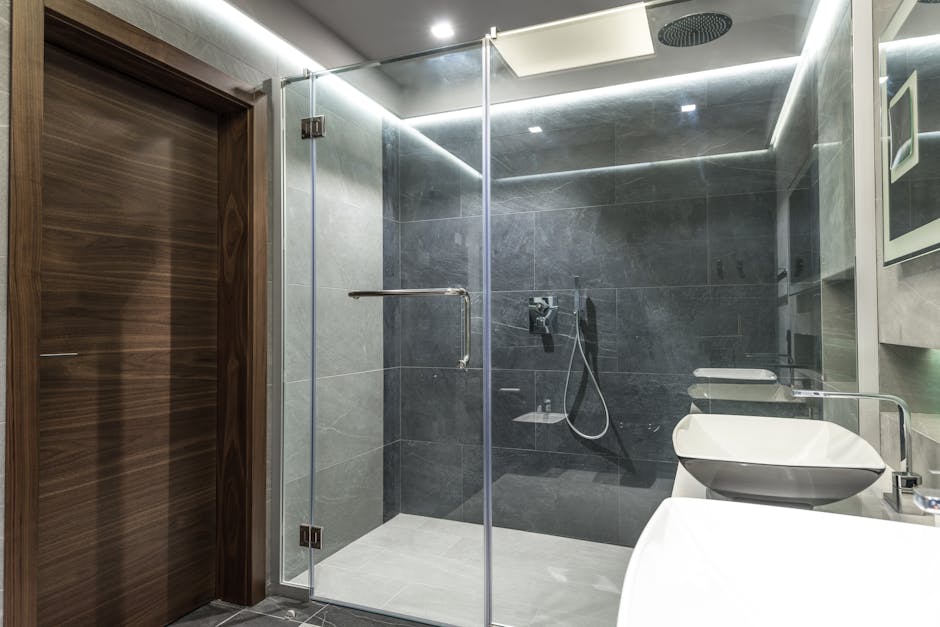Eco-Friendly Bathroom Renovation Tips and Tricks
Renovating a bathroom with eco-friendly options isn't just about reducing water consumption or using energy-efficient appliances, it's a complete approach that considers sustainability in materials, design, and long-term environmental impact. Whether you're planning a full remodel or just looking to make small changes, there are various strategies to ensure your bathroom is both stylish and environmentally responsible.

By choosing sustainable materials, improving water efficiency, and incorporating energy-saving lighting, you can lower your environmental footprint while still enjoying a modern and comfortable space. These choices not only benefit the planet but can also lead to cost savings over time, making eco-friendly renovations a win-win for homeowners.
Sustainable Materials for Bathroom Renovations
Choosing sustainable materials is one of the most impactful ways to make your bathroom renovation more eco-friendly. Many traditional materials, such as plastic-based countertops or non-recyclable tiles, are harmful to the environment in their production and disposal. Instead, consider natural and renewable resources like bamboo, cork, or reclaimed wood.
Bamboo is an excellent choice for bathroom floors or cabinetry. It grows quickly, making it highly renewable, and it’s durable enough to withstand moisture when properly treated. Cork is another eco-friendly option that provides natural resistance to mold and mildew, a perfect fit for bathrooms where humidity is often an issue.
Another great way to lessen the environmental impact of your renovation is by choosing recycled materials. Recycled glass tiles, Can add a unique aesthetic while reducing waste headed for landfills. Using salvaged wood from old buildings is also a sustainable way to add character and warmth to your bathroom without contributing to deforestation.
Water Efficiency: Reducing Consumption Without Sacrificing Comfort
Water use is a significant concern when considering the sustainability of a bathroom. Bathrooms account for around 50-60% of a household's total water usage according to data from the Environmental Protection Agency (EPA). Making smart choices here can have a substantial effect on both your utility bills and the environment.
Installing water-saving fixtures like low-flow showerheads and faucets can dramatically reduce water usage without sacrificing performance. Modern low-flow designs are engineered to maintain strong water pressure while cutting down on unnecessary water consumption. The EPA's WaterSense program certifies products that meet these standards; look for this label when shopping.
Dual-flush toilets are another fantastic innovation that allows you to use less water for liquid waste while providing a higher flush option for solids. This simple change can save thousands of gallons of water per year. In addition to these fixtures, incorporating aerators into your existing faucets can further reduce water flow without compromising on usability.
Energy-Efficient Lighting and Ventilation
Lighting may not be the first thing you think of when considering eco-friendly renovations, but it plays an essential role in reducing energy consumption. Switching from traditional incandescent bulbs to LED lighting can decrease energy use by up to 75%, according to the U.S. Department of Energy. LEDs last significantly longer than other bulbs and offer various color temperatures that allow you to customize the ambiance of your bathroom.
In addition to energy-efficient lighting, don’t overlook ventilation systems. A well-ventilated bathroom helps prevent mold growth while improving air quality, a particularly important factor in smaller spaces where humidity levels rise quickly. Energy-efficient exhaust fans with built-in timers or humidity sensors ensure that the fan operates only when necessary, saving both energy and money in the long run.
- Use LED light bulbs
- Install motion sensors or timers for lights
- Opt for Energy Star-certified exhaust fans
Eco-Friendly Paints, Sealants, and Cleaning Supplies
The finishes you choose for your bathroom also play a crucial role in creating an eco-friendly space. Many conventional paints contain volatile organic compounds (VOCs), which release harmful chemicals into the air during application and even afterward. VOCs can cause headaches, dizziness, and long-term respiratory issues, hardly what anyone wants in their home environment.
Opting for low-VOC or zero-VOC paints significantly reduces indoor air pollution while still providing a variety of color options and finishes. These paints are widely available today from major manufacturers such as Benjamin Moore and Sherwin-Williams.
The same considerations apply when selecting sealants and adhesives used during installation work. Many eco-friendly sealants are based on natural ingredients like linseed oil rather than petroleum-derived chemicals. Lastly, using biodegradable cleaning products not only protects your health but also prevents toxic runoff from entering water systems after they’re washed down drains.
| Material Type | Eco-Friendly Alternative |
|---|---|
| Flooring | Bamboo or Cork |
| Countertops | Recycled Glass or Salvaged Wood |
| Paints & Sealants | Low-VOC Paints & Natural Sealants |
| Tiles | Recycled Glass Tiles |
| Cabinets | Bamboo or Reclaimed Wood |
A little planning goes a long way toward making eco-friendly decisions during a bathroom renovation. Even small choices like switching to biodegradable cleaning products make an impact over time.
A Greener Bathroom for You and the Environment
An eco-friendly bathroom renovation offers numerous benefits beyond just reducing environmental impact, it improves air quality, conserves resources, lowers utility bills, and creates a healthier living space overall. Implementing sustainable practices doesn’t mean you have to compromise on style or comfort either; many eco-friendly options enhance both aesthetics and functionality. From installing low-flow fixtures to choosing sustainable building supplies like bamboo flooring or recycled glass tiles, each step makes a difference in conserving precious resources.